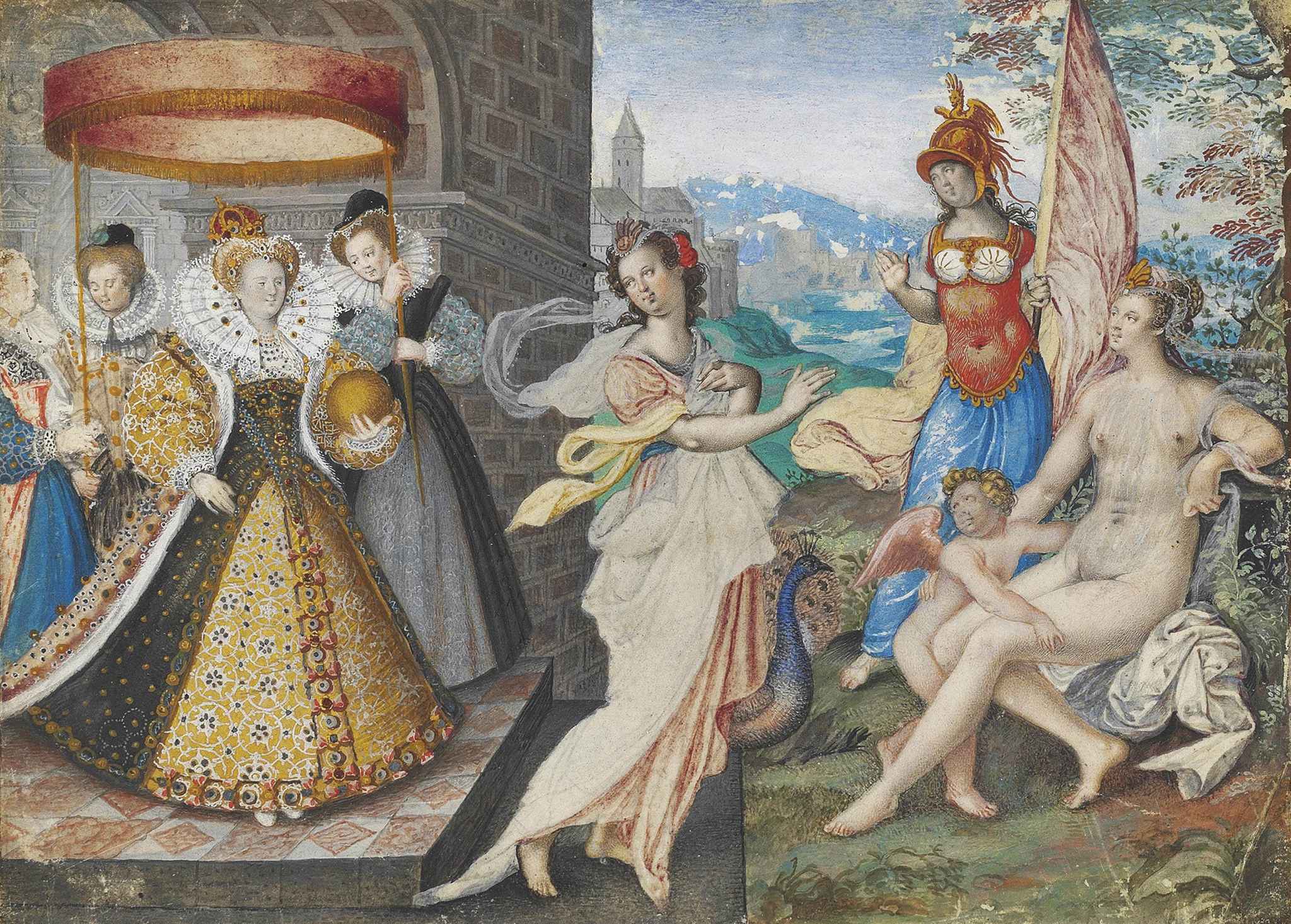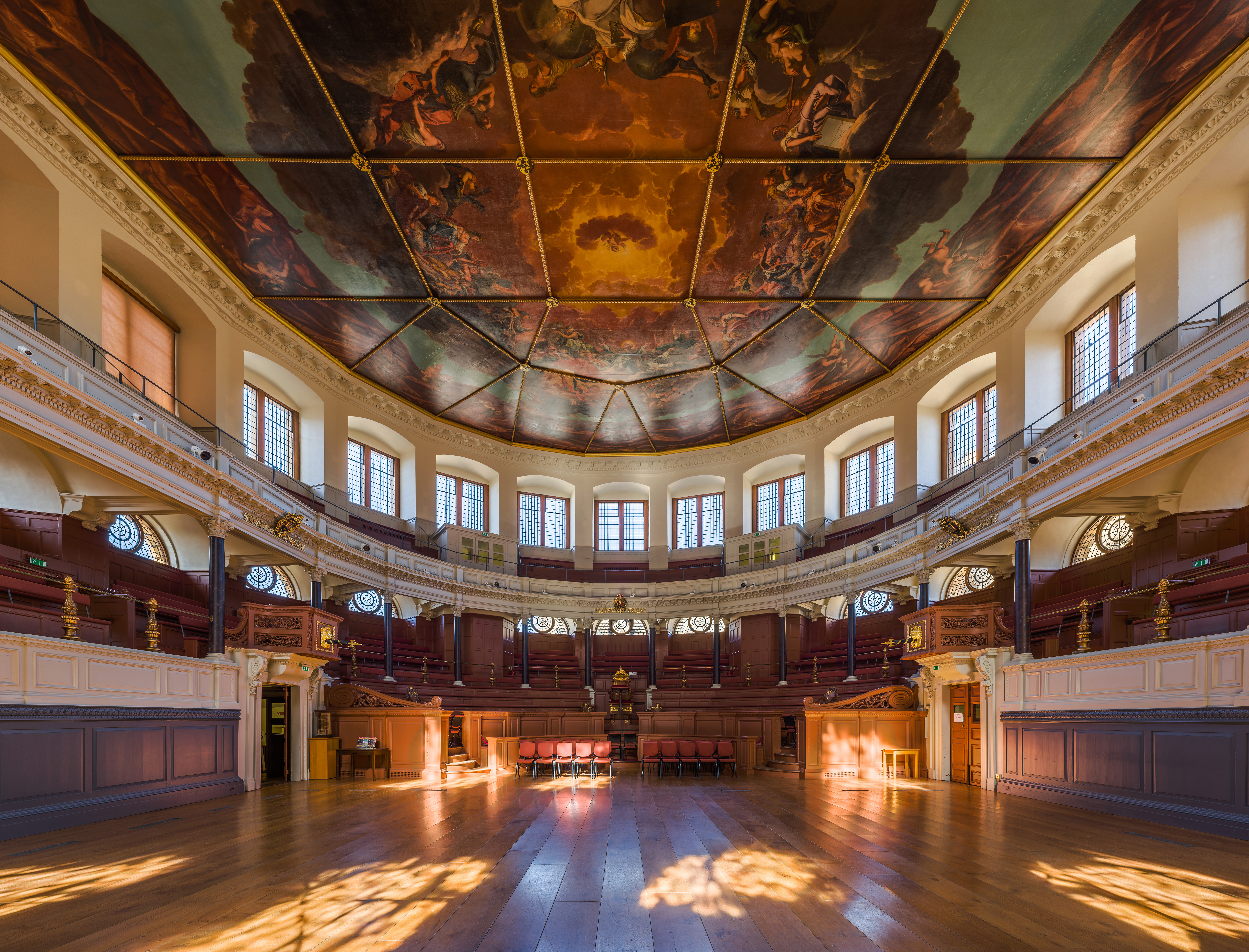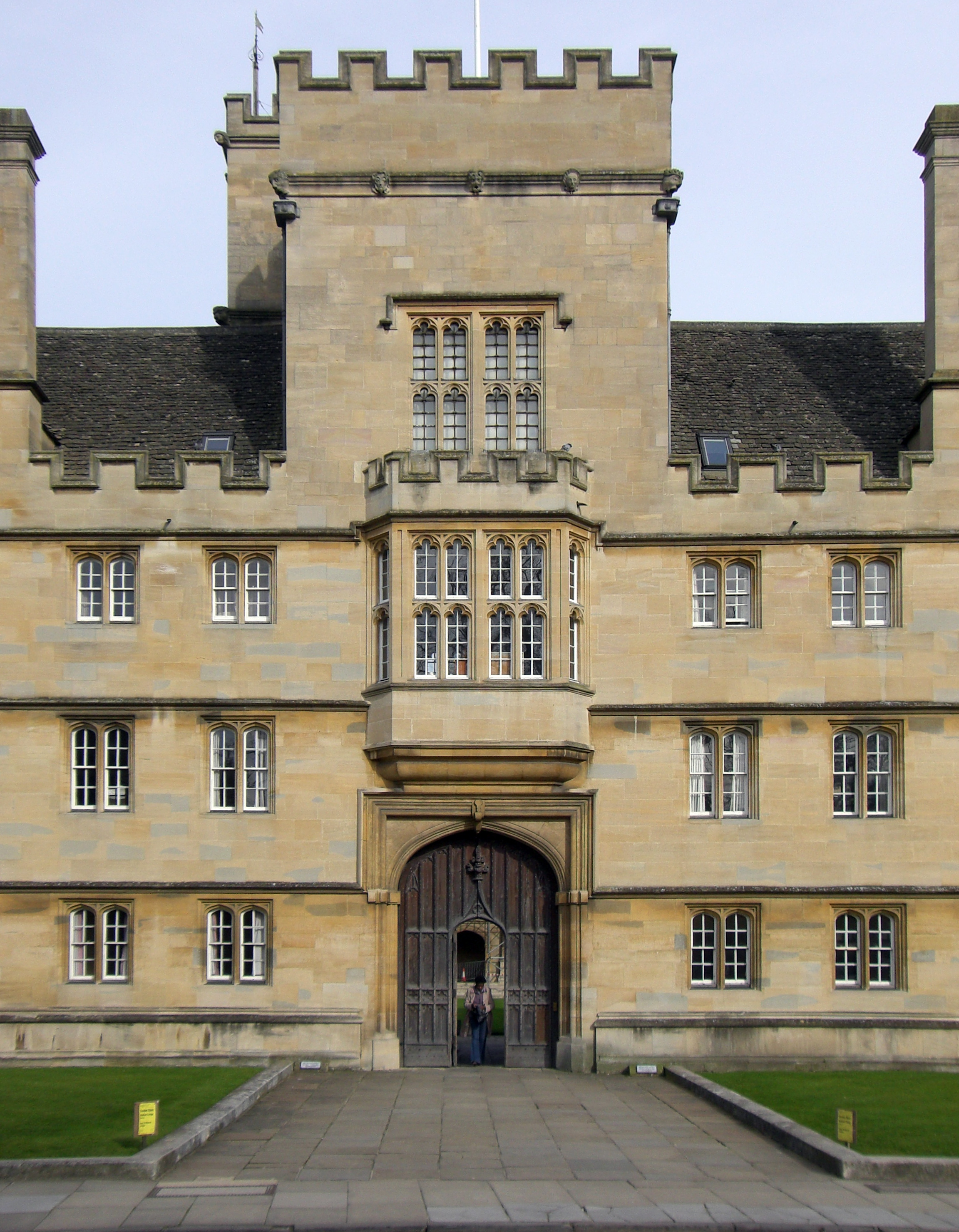|
Divinity School, Oxford
The Divinity School is a medieval building and room in the Perpendicular style in Oxford, England, part of the University of Oxford. Built between 1427 and 1483, it is the oldest surviving purpose-built building for university use, specifically for lectures, oral exams and discussions on theology. It is no longer used for this purpose, although Oxford does offer degrees in Theology and Religion taught by its Faculty of Theology and Religion. The ceiling consists of very elaborate lierne vaulting with bosses (455 of them), designed by William Orchard in the 1480s. The building is physically attached to the Bodleian Library (with Duke Humfrey's Library on the first floor above it), and is opposite the Sheldonian Theatre where students matriculate and graduate. At the far end from the Bodleian Library entrance, a door leads to Convocation House (built 1634–7). Image:external door north face oxford divinity school.jpg, The external door, added by Christopher Wren ... [...More Info...] [...Related Items...] OR: [Wikipedia] [Google] [Baidu] |
Divinity School Interior 1, Bodleian Library, Oxford, UK - Diliff
Divinity or the divine are things that are either related to, devoted to, or proceeding from a deity.divine – Dictionary.com. What is or is not divine may be loosely defined, as it is used by different belief systems. Etymology The root of the word ''divine'' is literally "godly", but the use varies significantly depending on which deity is being discussed.Usages Divinity as a quality has two distinct usages: *Divine force or power - Powers or forces that are universal, or transcend human capacities *Divinity applied to mortals - Qualities of individuals who are considered to have some special access or relationship to the divine. Overlap occurs between these usages because |
Sheldonian Theatre
Sheldonian Theatre, located in Oxford, England, was built from 1664 to 1669 after a design by Christopher Wren for the University of Oxford. The building is named after Gilbert Sheldon, chancellor of the University at the time and the project's main financial backer. It is used for music concerts, lectures and University ceremonies, but not for drama until 2015 when the Christ Church Dramatic Society staged a production of '' The Crucible'' by Arthur Miller. History What came to be known as the Sheldonian Theatre was Wren's second work and was commissioned by Gilbert Sheldon, Archbishop of Canterbury. With the triumph of the Restoration and with it the Church of England, Dean Fell, Vice-Chancellor of the University, sought to revive a project proposed in the 1630s by the late William Laud, Archbishop of Canterbury: a separate building whose sole use would be graduation and degree ceremonies. In the past these increasingly rowdy occasions had taken place in the University ... [...More Info...] [...Related Items...] OR: [Wikipedia] [Google] [Baidu] |
Tourist Attractions In Oxford
Tourism is travel for pleasure or business; also the theory and practice of touring, the business of attracting, accommodating, and entertaining tourists, and the business of operating tours. The World Tourism Organization defines tourism more generally, in terms which go "beyond the common perception of tourism as being limited to holiday activity only", as people "travelling to and staying in places outside their usual environment for not more than one consecutive year for leisure and not less than 24 hours, business and other purposes". Tourism can be domestic (within the traveller's own country) or international, and international tourism has both incoming and outgoing implications on a country's balance of payments. Tourism numbers declined as a result of a strong economic slowdown (the late-2000s recession) between the second half of 2008 and the end of 2009, and in consequence of the outbreak of the 2009 H1N1 influenza virus, but slowly recovered until the COVID-19 pa ... [...More Info...] [...Related Items...] OR: [Wikipedia] [Google] [Baidu] |
Christianity In Oxford
Christianity is an Abrahamic monotheistic religion based on the life and teachings of Jesus of Nazareth. It is the world's largest and most widespread religion with roughly 2.38 billion followers representing one-third of the global population. Its adherents, known as Christians, are estimated to make up a majority of the population in 157 countries and territories, and believe that Jesus is the Son of God, whose coming as the messiah was prophesied in the Hebrew Bible (called the Old Testament in Christianity) and chronicled in the New Testament. Christianity began as a Second Temple Judaic sect in the 1st century Hellenistic Judaism in the Roman province of Judea. Jesus' apostles and their followers spread around the Levant, Europe, Anatolia, Mesopotamia, the South Caucasus, Ancient Carthage, Egypt, and Ethiopia, despite significant initial persecution. It soon attracted gentile God-fearers, which led to a departure from Jewish customs, and, after the Fall of Jerus ... [...More Info...] [...Related Items...] OR: [Wikipedia] [Google] [Baidu] |
History Of Oxford
' The history of Oxford in England dates back to its original settlement in the Saxon period. Originally of strategic significance due to its controlling location on the upper reaches of the River Thames at its junction with the River Cherwell. The town grew in national importance during the Norman period. The University of Oxford was established in the 12th-century and would eventually dominate the activity within the town, this also resulted in several town and gown conflicts. The city was besieged during The Anarchy in 1142 and Oxford Castle was attacked during the Barons War in the early 13th century. Oxford was greatly affected during the English Reformation, brought on by Henry VIII in his dissolution of the monasteries. The town also played an important role in the English Civil War, where it experienced another siege when it housed the court of Charles I. Later in the 19th and 20th century, the town grew and underwent an industrial boom where major printing and car-manu ... [...More Info...] [...Related Items...] OR: [Wikipedia] [Google] [Baidu] |
Buildings And Structures Of The University Of Oxford
A building, or edifice, is an enclosed structure with a roof and walls standing more or less permanently in one place, such as a house or factory (although there's also portable buildings). Buildings come in a variety of sizes, shapes, and functions, and have been adapted throughout history for a wide number of factors, from building materials available, to weather conditions, land prices, ground conditions, specific uses, prestige, and aesthetic reasons. To better understand the term ''building'' compare the list of nonbuilding structures. Buildings serve several societal needs – primarily as shelter from weather, security, living space, privacy, to store belongings, and to comfortably live and work. A building as a shelter represents a physical division of the human habitat (a place of comfort and safety) and the ''outside'' (a place that at times may be harsh and harmful). Ever since the first cave paintings, buildings have also become objects or canvasses of much artist ... [...More Info...] [...Related Items...] OR: [Wikipedia] [Google] [Baidu] |
Oxford University Press
Oxford University Press (OUP) is the university press of the University of Oxford. It is the largest university press in the world, and its printing history dates back to the 1480s. Having been officially granted the legal right to print books by decree in 1586, it is the second oldest university press after Cambridge University Press. It is a department of the University of Oxford and is governed by a group of 15 academics known as the Delegates of the Press, who are appointed by the vice-chancellor of the University of Oxford. The Delegates of the Press are led by the Secretary to the Delegates, who serves as OUP's chief executive and as its major representative on other university bodies. Oxford University Press has had a similar governance structure since the 17th century. The press is located on Walton Street, Oxford, opposite Somerville College, in the inner suburb of Jericho. For the last 500 years, OUP has primarily focused on the publication of pedagogical texts a ... [...More Info...] [...Related Items...] OR: [Wikipedia] [Google] [Baidu] |
Christopher Wren
Sir Christopher Wren PRS FRS (; – ) was one of the most highly acclaimed English architects in history, as well as an anatomist, astronomer, geometer, and mathematician-physicist. He was accorded responsibility for rebuilding 52 churches in the City of London after the Great Fire in 1666, including what is regarded as his masterpiece, St Paul's Cathedral, on Ludgate Hill, completed in 1710. The principal creative responsibility for a number of the churches is now more commonly attributed to others in his office, especially Nicholas Hawksmoor. Other notable buildings by Wren include the Royal Hospital Chelsea, the Old Royal Naval College, Greenwich, and the south front of Hampton Court Palace. Educated in Latin and Aristotelian physics at the University of Oxford, Wren was a founder of the Royal Society and served as its president from 1680 to 1682. His scientific work was highly regarded by Isaac Newton and Blaise Pascal. Life and works Wren was born in Eas ... [...More Info...] [...Related Items...] OR: [Wikipedia] [Google] [Baidu] |
Convocation House
Convocation House is the lower floor of the 1634–1637 westward addition to the University of Oxford's Bodleian Library and Divinity School in Oxford, England. It adjoins the Divinity School, which pre-dates it by just over two hundred years, and the Sheldonian Theatre, to its immediate north. History Seventeenth-century origins The entire westward section was originally known as Selden End, in recognition of the gift of books from the lawyer John Selden which occupy the portion of the Bodleian Library housed above. In 1665 and 1681, during the reign of Charles II, the chamber served as home for the Royalist Members of the English Parliament. Its present stone-vaulted ceiling dates from 1758 to 1759. Present Convocation House is used for meetings of the University of Oxford's Convocation A convocation (from the Latin ''wikt:convocare, convocare'' meaning "to call/come together", a translation of the Ancient Greek, Greek wikt:ἐκκλησία, ἐκκλησία ''ekkl ... [...More Info...] [...Related Items...] OR: [Wikipedia] [Google] [Baidu] |
Duke Humfrey's Library
Duke Humfrey's Library is the oldest reading room in the Bodleian Library at the University of Oxford. It is named after Humphrey of Lancaster, 1st Duke of Gloucester, who donated 281 books after his death in 1447. Sections of the libraries were restored and expanded in the 16th and 17th centuries, including the addition of a second storey, an east wing and a west wing. The library currently functions as a reading room. History Duke Humfrey's Library is named after Humphrey of Lancaster, 1st Duke of Gloucester, a younger son of Henry IV of England. He was a connoisseur of literature and commissioned translations of classical works from Greek into Latin. When he died in 1447, he donated his collection of 281 books to the University. This was considered a very generous donation, as the university at the time only had 20 books and all classes were taught via oral lectures; prior to Gutenberg's circa 1450 invention of the movable type press, books were hand-copied and were onl ... [...More Info...] [...Related Items...] OR: [Wikipedia] [Google] [Baidu] |
Perpendicular Period
Perpendicular Gothic (also Perpendicular, Rectilinear, or Third Pointed) architecture was the third and final style of English Gothic architecture developed in the Kingdom of England during the Late Middle Ages, typified by large windows, four-centred arches, straight vertical and horizontal lines in the tracery, and regular arch-topped rectangular panelling. Perpendicular was the prevailing style of Late Gothic architecture in England from the 14th century to the 17th century. Perpendicular was unique to the country: no equivalent arose in Continental Europe or elsewhere in the British Isles. Of all the Gothic architectural styles, Perpendicular was the first to experience a second wave of popularity from the 18th century on in Gothic Revival architecture. The pointed arches used in Perpendicular were often four-centred arches, allowing them to be rather wider and flatter than in other Gothic styles. Perpendicular tracery is characterized by mullions that rise vertically a ... [...More Info...] [...Related Items...] OR: [Wikipedia] [Google] [Baidu] |





.jpg)



